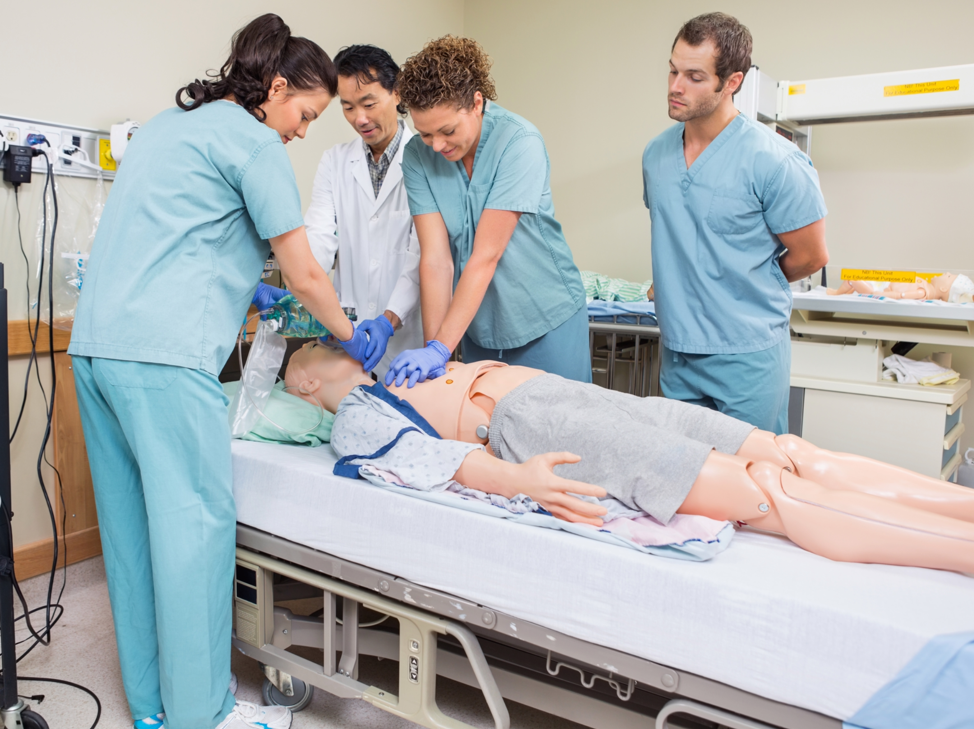5 Ways Simulation in Nursing Education Is Used To Prepare Tomorrow’s Nurses

With emergence of the COVID-19 pandemic, simulation in nursing education has played a critical role in students’ clinical education experiences since clinical placements in hospitals have been restricted or eliminated altogether.(1) However, even pre-pandemic, faculty and researchers recognized the value of simulation in nursing education to teach and evaluate nursing skills and competencies.
Why Is Simulation Important in Nursing Education?
Even before COVID-19, nursing schools struggled with increasingly fewer hospital clinical placements as other healthcare programs compete for sites for students’ educational needs as well (1). This combined with growing concerns about healthcare reform and the economic crisis has led to more value being placed on the importance of simulation in nursing education than ever before. (2)
What’s the Role of Simulation in Nursing Education?
According to the NCSBN, the role of simulation in nursing education is both as a teaching strategy and an evaluation tool. (3)
Studies have shown nursing students report simulation experiences to be “good” and comparable to a “real situation” working with patients. As an evaluative tool, faculty are able to watch students use nursing and critical thinking skills and then provide students with feedback in debriefing sessions that students find helpful for improving. (4)
“You don’t understand anything until you learn it more than one way. ”
— MARVIN MINSKY

What Are Some Ways Simulation Can Be Used in Nursing Education?
Virtual simulation experiences enable nursing instructors to provide students with almost any imaginable patient care scenario. In doing so, they are able to evaluate students’ ability to apply theoretical knowledge safely and prioritize care.
Current ways simulation is being used to teach nursing students include:
1. LEARNING ANATOMY
Some schools use virtual reality to teach human anatomy. This is done with virtual anatomy tables that allow students to examine various parts of the human anatomy by performing virtual dissections. (5)
2. MASS CAUSALITY AND MULTI-PATIENT SITUATIONS
Research has shown that simulation can provide valuable experiences for senior nursing students in disaster response. Simulation of a mass casualty event can help students develop teamwork skills, clarify roles, manage various nursing responsibilities, and improve their ability to prioritize patient needs. (5)
3. END-OF-LIFE CARE
Not all nursing students have the opportunity to provide end-of-life care to a patient when in school. However, research has shown that students are able to gain significant “knowledge, self-confidence, and perceived communication skills” by participating in an end-of-life simulation that requires them to provide nursing care for a patient and grieving family. (5)

4. MENTAL HEALTH CARE
Nursing content in mental health can also be taught and evaluated using simulation involving standardized or simulated patients (trained actors). Studies have shown simulated mental health scenarios provide students with the opportunity to practice therapeutic communication and interviewing skills which helped increase student confidence and decrease anxiety before entering the clinical setting. (5)
5. INTRA AND INTERDISCIPLINARY COMMUNICATION
Studies have also shown that virtual simulation using a variety of different platforms is effective in helping students:
● Learn how to communicate with physicians
● Work collaboratively as an interprofessional education (IPE) team with pharmacy and medical students
● Provide safe and effective ISBAR reports during clinical handoffs at the end of a shift (5)
Simulation in nursing education is an ideal tool for teaching and evaluating students with almost unlimited uses. With reduced access to hospital clinical placements and ongoing healthcare reform, nursing instructors find themselves relying on this technology and their creativity even more to prepare skilled nurses for the future.
At MedCognition, our goal is to provide frontline healthcare professionals with cutting-edge augmented reality simulation that is affordable, portable and realistic. Contact us to learn how your nursing program can benefit from this innovative simulation modality.
References:
3.https://ncsbn.org/Suling2.pdf
4.https://advancesinsimulation.biomedcentral.com/articles/10.1186/s41077-017-0048-z
ABOUT THE WRITER
Leona Werezak MN, BSN, RN is a freelance healthcare/medical content marketing writer and registered nurse. She has taught nursing students in BSN programs for 20 years.



